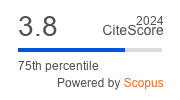Article | Open Access
Theory of Place in Public Space
| Views: | 9923 | | | Downloads: | 9188 |
Abstract: Place as a theory fails to clearly articulate linkages between meaning and physical settings for chosen activities in public space. In addressing these issues, the meaning of user behaviour in public space is described by affective and cognitive images of the physical setting; a theoretical conceptualisation of individual experiences which include overlapping social, cultural, and educational contexts. The results of a survey of 160 users across four public spaces found that affect framed cognitive evaluations of design elements for anticipated behaviour. A two-stage process suggesting place-making in design need to shift emphases from articulating preferences to enabling interpretation and opportunity. Within this theoretical framework, the argument is presented that a focus on aligning design with public expectation at a point in time will lead to temporal popularity of location, to popular places that will be presented for redevelopment at some future point in time when their popularity declines.
Keywords: affect; behaviour; cognition; facet theory; place-making; public space; theory of place
Published:
Supplementary Files:
© Mark Del Aguila, Ensiyeh Ghavampour, Brenda Vale. This is an open access article distributed under the terms of the Creative Commons Attribution 4.0 license (http://creativecommons.org/licenses/by/4.0), which permits any use, distribution, and reproduction of the work without further permission provided the original author(s) and source are credited.


